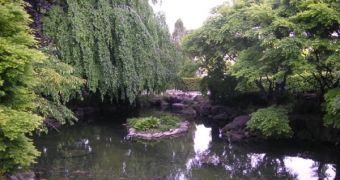Understanding how and why species of both prey and predators show extremely large or extremely small fluctuations in their numbers, over time, in the same habitat has been a long sought-for prize in the biology international community. But now, researchers learned that these so-called cycles are a natural part of the self-regulatory process all habitats undergo from time to time.
Despite the fact that most ecosystems may seem unstable and could exhibit large variability in their natural composition, they are actually quite stable, researchers at the University of Calgary (UC) explain. They say that the occurring declines and booms in both predatory and prey populations come to pass as a direct results of slight variations in the environmental conditions, such as drought in some ponds, or the lack of a specific nutrient in the soil, for example.
Daphnia, a small crustacean, was the target of the current study, supervised by UC biologist Edward McCauley. The scientists studied the relations that formed between this animal and its prey, a microscopic form of algae. They uncovered that the decline in Daphnia populations occurred regularly, due to small variances in the level of food availability. During the experiments, conditions in the observation tanks were kept unchanged, so as not to alter the scientific results.
McCauly explained "Nature is often described to be in different states. For example, lakes are often characterized as to whether they are clear or turbid and these states resist changes over time. Here we are dealing with cycles in abundance being the different states – lakes can have populations displaying large cycles or small cycles or both."
This discovery could shed new light on variances that occur in nature in relatively unchanged environments. Some of these results could also be translated in humans, so as to predict what influence raising global-warming related phenomena will have on the dynamics of population migration over the years.

 14 DAY TRIAL //
14 DAY TRIAL //